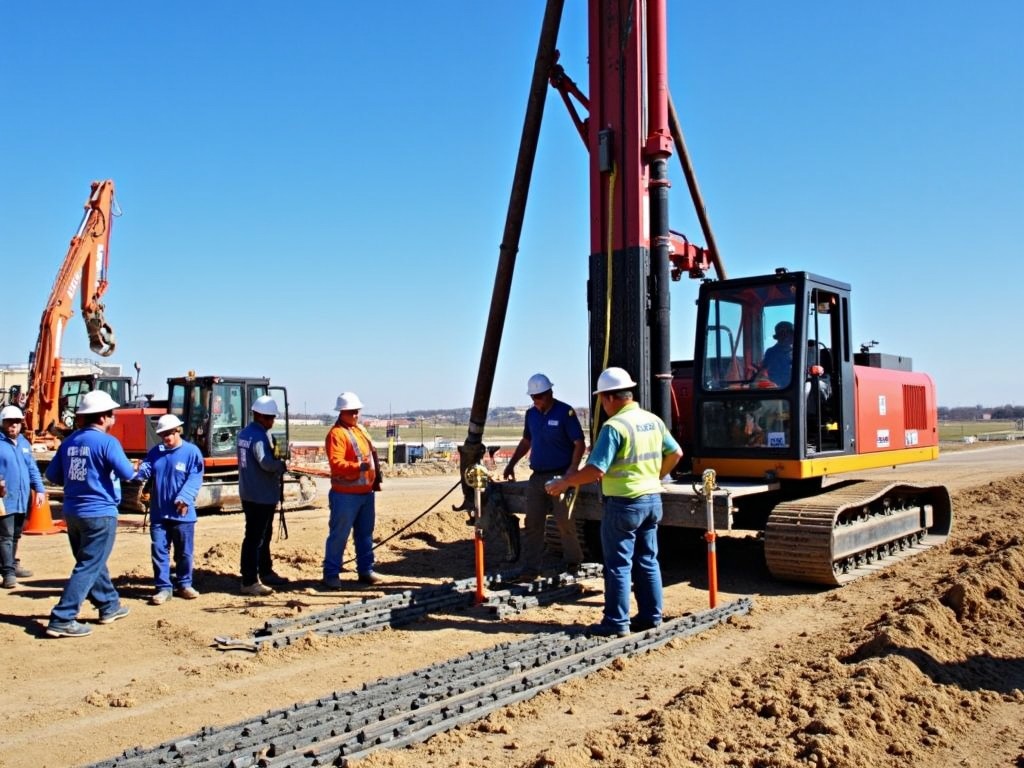Unlocking the Future: Innovative Foundation Reinforcement Technologies
Overview: Delve into groundbreaking foundation reinforcement technologies that are transforming the landscape of modern architecture, ensuring safety and sustainability for the future.
The Importance of Foundation Reinforcement
Understanding the significance of foundational support is crucial in construction. Foundations act as the skeleton of any structure, absorbing weight and bearing the brunt of natural elements. Weak foundations can lead to catastrophic failures. Thus, innovative foundation reinforcement technologies have revolutionized traditional methods, offering durability and resilience.
Conventional vs. Modern Techniques
Traditional foundation methods often struggle to adapt to new environmental challenges and architectural demands. Modern technologies, however, embrace flexibility and strength. But what exactly sets these advanced techniques apart?
A Glimpse at Modern Techniques
- Micropiles: These small-diameter, high-strength steel elements are designed to support or resist loads, particularly useful in limited access or challenging subsurface conditions.
- Jet Grouting: A technique that improves the parameters of the soil by injecting high-pressure grout, creating a reinforced rock-like structure.
- Helical Piles: Screw-like steel foundations driven into the ground, ideal for supporting loads and offering minimal disturbance during installation.
Transitioning to Eco-friendly Technology
The construction industry, notorious for its environmental impact, is gradually adopting greener practices. Today, foundation design is not just about stability but sustainability. Eco-friendly solutions like carbon-injected concrete and recycled materials are gaining traction.
Key Benefits
- Longevity: Modern reinforcement increases the lifespan of buildings.
- Adaptability: Innovative designs accommodate various geographical challenges.
- Environmental Impact: New techniques often reduce the carbon footprint.
Personal Insights: Having spent years in the construction industry, I've witnessed firsthand the shift towards these ground-breaking methods. From hesitant first trials to widespread adoption, the journey has been remarkable. Builders and clients have become more open to experimenting with these innovative solutions, recognizing not only their structural benefits but also cost efficiency in the long run.

How Technologies are Chosen
Choosing the right reinforcement technology doesn't follow a 'one-size-fits-all' rule. Factors such as soil type, environmental conditions, and building design play pivotal roles in this decision-making process. Here's how these considerations shape choices:
- Soil Conditions: Different techniques suit various soil types. For instance, sandy soils might benefit more from helical piles, while clay-rich areas might require jet grouting.
- Building Usage: Understanding how a building will be used guides whether to use traditional or modern techniques.
- Environmental Factors: Regions prone to natural disasters often opt for more resilient solutions like micropiles.
Real World Applications
Let's explore real-life applications where cutting-edge foundation reinforcement technologies have made a difference.
Case Study: Urban Skyscraper
Urban skyscrapers often soar to great heights above unstable grounds. A recent project employed jet grouting to enhance soil stability, allowing for a lighter yet secure foundation. This resulted in a faster build time and reduced costs.
Case Insight: Observing the seamless integration of technology in such mega-projects showcases not only the potential but also the need for continuous improvement in foundation design.
Advancing Technology: The Future Landscape
As technology evolves, so do the possibilities for foundation reinforcement. There's an ongoing development of smart materials and nanotechnology that promises to further revolutionize the industry.
- Smart Materials: These can adapt to environmental changes or structural loads in real-time, thus enhancing security and efficiency.
- Nanotechnology: Aims at strengthening materials at a molecular level, providing unprecedented durability.
Industry Perspective: Staying ahead requires constant learning. In conferences and workshops, there's a palpable excitement over these future technologies. Personally, the discussions and prototype demonstrations have been inspiring, hinting at a promising future.

Key Takeaways
- Adaptation to Change: Essential as we build in diverse conditions.
- Safety Through Innovation: New tech ensures safety while pushing design boundaries.
- Sustainable Growth: Important for reducing environmental footprint while meeting modern needs.
In essence, the fusion of innovative foundation reinforcement technologies with sustainable practices is leading the way to smarter, safer, and more resilient building practices. As we look towards future advancements, the need for integrating cutting-edge technology into our foundation designs has never been clearer.
Recommended Readings
- "The Next Generation of Foundation Designs: Embracing New Challenges"
- "Sustainability in Construction: The Role of Innovative Materials"
- "Smart Foundations: How Technology is Revolutionizing Building Safety"
For those dedicated to pushing architectural boundaries while maintaining respect for our planet, the evolving landscape of foundation reinforcement offers both challenges and opportunities.





